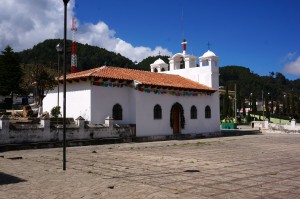- Some initial thoughts on Chiapas, Mexico
- Cañón del Sumidero, Chiapa de Corzo, and San Cristóbal de las Casas, Chiapas, Mexico
- Zinacantán and Chamula, Chiapas, Mexico
- Walking around San Cristóbal de las Casas, Chiapas, Mexico
- The road to Palenque, Chiapas, Mexico
- Bonampak and Yaxchilan, Chiapas, Mexico
- Villahermosa, Tabasco, Mexico
Today, we took a short drive out of San Cristobál to visit two Mayan villages while, while similar, are also remarkably different. I should start by saying that these Tzotzil Maya “villages” have populations of 50,000-60,000 residents. They run mostly autonomously from the state of Chiapas, living largely under their own laws. How they celebrate their religion is also interesting – based on Catholicism, with more Mayan beliefs and traditions built in. We started the morning in Zinacantán, the far more open of the two villages. The major industry is growing flowers and, in fact, the hills are dotted with greenhouses. This industry has only been around since the 1940s as more people traveled down the Pan American Highway – which runs right through this part of Chiapas. Here, most people wear the traditional garb, decorated with intricate weaving and embroidery in a myriad of colors. What is interesting is that the men wear basically the same types of designs and colors in their ponchos that the women do. Families tend to live together in small compounds that typically have working areas for weaving, cooking and living areas. We also learned about (and tried) pox (pronounced posh), a potent alcoholic beverage (32% alcohol) that is used in large quantities in the community. Any time you are going to have a serious discussion, argument, or negotiation, it is typical for all parties to drink a lot of pox ahead of time. The belief is that more truth comes forward when your inhibitions are down. I told them that it was a good thing that this wasn’t a tradition for us, as Deb and I would be drinking a lot of pox! Similarly, healers and patients typically drink pox and the healer can then speak with the disease and ask it to leave. The people here were very friendly and we really enjoyed shopping for some of the local textiles.
Visiting Chamula was a very different experience. It tends to be a more conservative community that follows more traditional practices much more so than Zinacantán. As an example, photography is not allowed in most parts of Chamula, especially in the 200-year-old Church of San Juan Bautista (St. John the Baptist – the patron saint of the community). Ignoring this will land you in jail, with a hefty, nonnegotiable fine. This is part of the second major difference in this community. The civil leaders of the town are selected by outgoing leaders. They serve for one year full-time with no salary and perform all civil and law enforcement roles. Typically, people with money are selected as they can afford to go a year without an income (it’s a leveling thing). But they also select some members who are “down on their luck” (e.g., people with alcohol or drug problems) as a way to get them back on the “straight and narrow.” What is amazing is that these leaders are empowered to make legal decisions up through, and including, the death penalty – which has occurred recently in cases of rape and stealing a taxi. While investigations are encouraged, they are not required and some men have been pulled into the square, covered in gasoline, and set ablaze based on the victim’s claim. Probably the biggest difference here relates to religion. In Zinacantán, a broad range of religious services (e.g., Catholic, Mormon, Muslim) are held. In Chamula, there is only one religion – it is a spin-off of Catholicism, but there are no services other than a once-a-year baptism service. The rest of the time, the church is open for people to pray for intercession to Saint John the Baptist (or one of the host of other saints whose statues line the walls. The floors are covered in pine needles. When a person (or group of people) want to pray for intercession, they clear a space, set up a large number of candles and begin to pray (sometimes silently, and sometimes chanting. They also make offerings of soda (it’s a long story, but it used to be rare and expensive). If they are praying for a sick person, often the person is laying there. A live chicken is passed over the sick person and then is killed, with the theory that the disease passes to the chicken before it is killed. I asked what happens to the chickens. What I learned was that while they are supposed to be buried, they are often sold to the markets – meaning the chicken I had yesterday could have had someone else’s disease! Anyway, we spent nearly an hour in the church watching these ceremonies. It was amazing! We then headed back to San Cristobál, where we will have a free day tomorrow to check it out more.
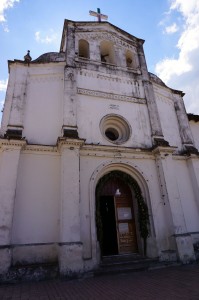
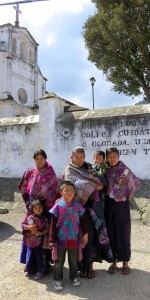
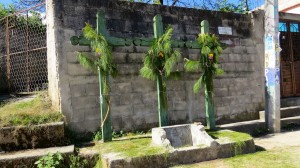
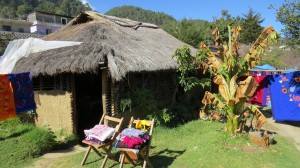
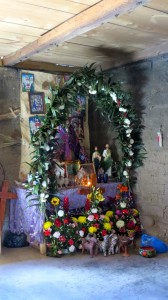
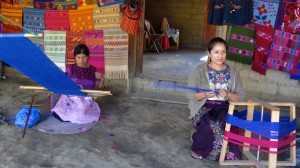
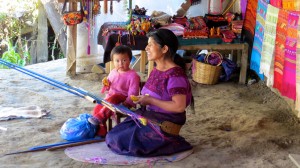
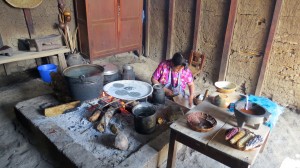
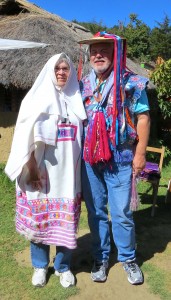
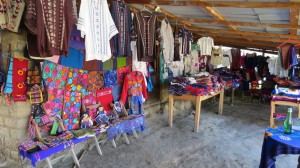
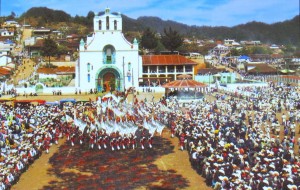
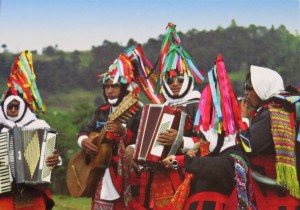
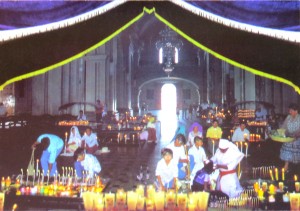
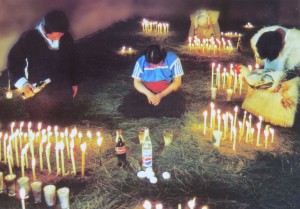
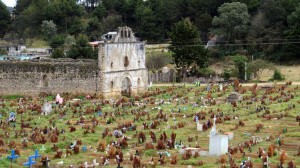
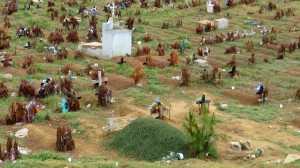
This entry was posted in Chiapas, Mexico, Travel
